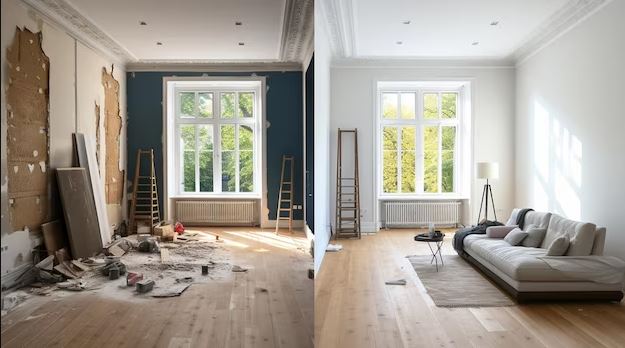Trends in Home and Commercial Renovation That Every Renovation Company Should Know
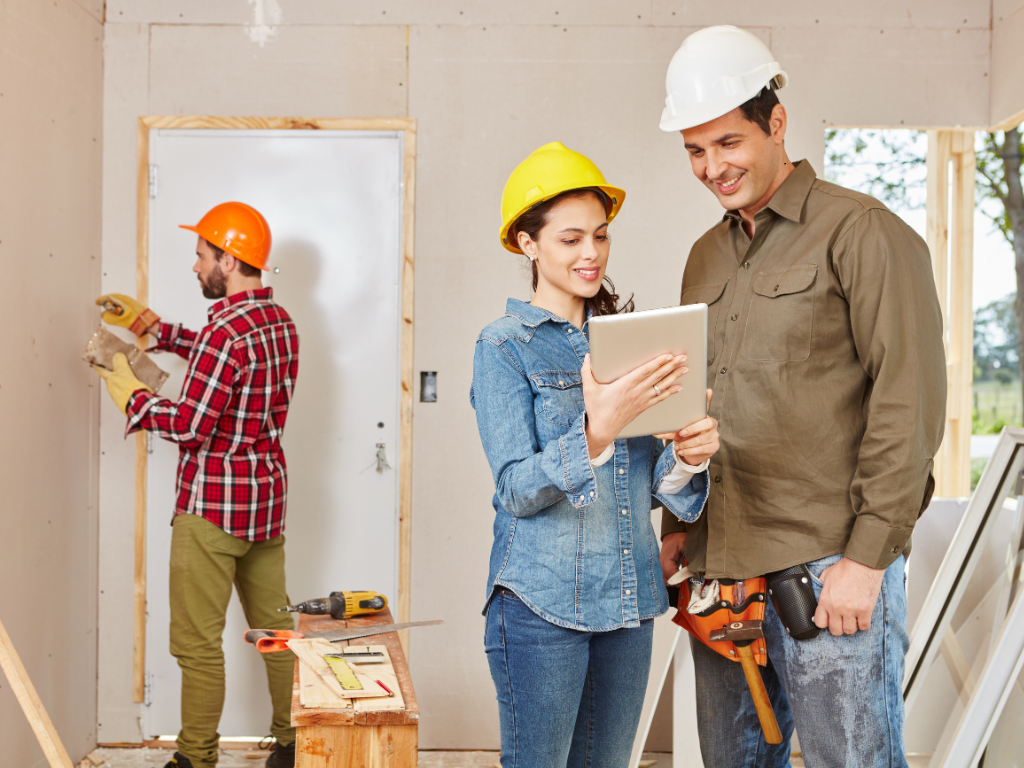
The renovation world is booming. More people want modern, efficient homes now more than ever. It’s key for both homeowners and pros to keep up with the latest trends. This ensures renovations boost looks, function, and green credentials. So, here are the latest trends in home and commercial renovation that every renovation company should know.
Sustainable and Eco-Friendly Materials
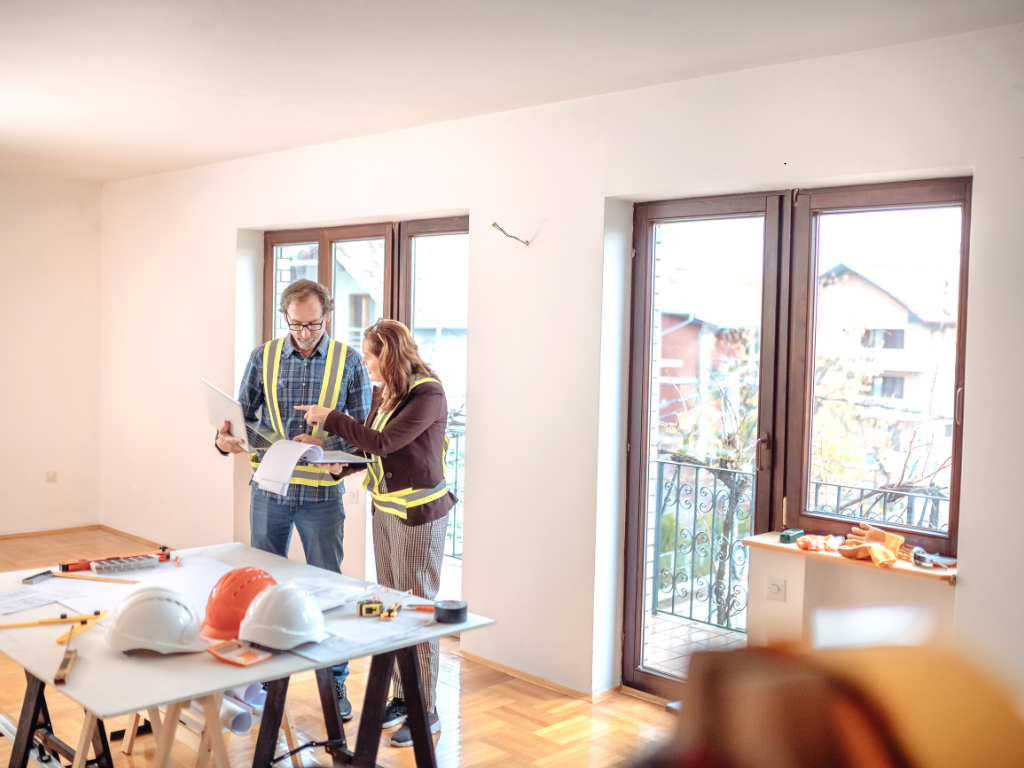
Green Building Standards
Green building standards like LEED Certification, Passive House, and Energy Star ratings are the gold standard for eco-friendly construction. LEED focuses on all-around sustainability—think less waste and smarter resource use.
Passive House zeroes in on buildings that barely use energy, slashing their environmental toll. And those Energy Star labels? They’re a thumbs-up for gadgets that go easy on power consumption. Embracing these benchmarks can make any building greener and run more smoothly.
Sustainable Materials
Using eco-friendly materials like bamboo, cork, recycled metal, and glass, plus reclaimed wood, can make a big difference in how green renovation projects are. Bamboo and cork grow back fast. They’re tough but look great too. Recycled metals and glasses help keep things from going to waste by reusing them instead of making new stuff all the time – this saves energy as well!
Reclaimed wood brings its cool vibe with built-in history; it also fights against cutting down more trees and piling up waste. Choosing these kinds of materials is a win for both the planet’s health and promoting greener living habits.
Energy-Efficient Solutions
Switching to solar panels, smart thermostats, and LED lights can really cut down on energy bills and shrink carbon footprints. Solar panels grab clean energy right from the sun, cutting back on fossil fuel use.
Smart thermostats make heating and cooling more efficient without sacrificing comfort. And LEDs? They’re not just good for saving power; they also last ages, so there’s less hassle with replacements. Put all these together for a home that’s both greener and easier on the wallet.
Water Conservation Techniques
Saving water is key in eco-friendly home makeovers. Think about installing gadgets that use less water but still do the job well—or collecting rainwater for water plants and other uses around the house, saving good drinking water.
Choosing plants that don’t need much watering keeps gardens green without guzzling too much H2O. All these steps together cut down on how much fresh water we use and can also save some cash on those monthly bills.
Indoor Air Quality Improvements
Boosting the air quality inside homes is key for a healthy space. Using safe paints and finishes cuts down on nasty chemicals in the air. This makes breathing easier and healthier. Houseplants are great, too! They’re like nature’s own air filters, sucking up toxins and making the air feel fresh.
And don’t forget about good airflow – having an effective ventilation system stops pollutants from hanging around too long. All these steps make indoor spaces safer and more comfortable to live in, which is awesome for everyone’s well-being.
Smart Home Technology Integration

Automation Systems
Smart lighting lets folks change their home’s vibe from anywhere. They can tweak the light for any activity or time of day. Security tech has leveled up, too, with live cameras, motion sensors, and alerts sent straight to smartphones.
HVAC systems get smart by learning what temperatures feel best at different times, saving energy in the process. All these gadgets make life easier and safer—and they’re all controlled right from a smartphone.
Smart Appliances
Smart kitchens are changing the game in meal prep. Imagine appliances that grab recipes online and tweak cooking settings on their own. Then, there are washers and dryers that know just how much water and energy to use based on what’s being washed or dried – smart, right?
And don’t get started on intelligent water heaters! They keep an eye on power use and figure out when to heat up for both savings and efficiency. All these gadgets link up with home networks, too. This means easier control over them all – making life not only more convenient but also kinder to the wallet thanks to those energy savings.
Entertainment and Convenience
Smart tech turns living rooms into mini cinemas. Imagine streaming movies with epic surround sound, all in the comfort of your home. Then there’s safety – smart locks and doorbells let homeowners check on visitors or unlock doors from anywhere.
And don’t forget voice assistants! They’re like having a personal helper at home to manage devices and answer questions, making homes both fun spots for entertainment and secure retreats.
Health and Wellness Technologies
Air and water purifiers make homes healthier. They kick out the bad stuff from air and water, making everything cleaner to breathe and drink. Then there’s smart gym gear that tailors workouts just right, syncing with health apps to keep tabs on progress. And don’t forget about sleep tech!
Things like clever mattresses and gadgets track how well someone sleeps. They even tweak conditions for a better night’s rest. All these cool tools play their part in keeping home life healthy from all angles.
Remote Control and Monitoring
Smartphone apps have taken the lead in managing smart home tech. They offer a level of ease and customization that’s hard to beat. Now, you can get heads-ups on appliance issues before they turn into big problems, thanks to remote diagnostics. This cuts down on unexpected breakdowns and repair bills.
Alert systems let homeowners know when it’s time for some TLC on their house’s important systems. Acting fast means less hassle later on. Being able to monitor and control things from afar adds an extra layer of comfort, making homes more efficient and worry-free.
Flexible and Multifunctional Spaces

Open-Plan Layouts
Knocking down walls to merge rooms opens up the home, making it feel bigger and more welcoming. It turns kitchens and living areas into shared spaces, which makes hanging out or hosting friends easier and better blends daily routines. More sunlight can flow through, brightening up the place while saving on energy bills, too. Open-plan homes are all about creating flexible, connected spots for everyone to enjoy.
Convertible Spaces
Foldable walls and furniture let homeowners switch up their living areas as needed. They can change a room’s purpose in no time – from home offices to guest rooms or play spaces, making the most of every inch.
Clever hidden storage keeps things tidy and makes these flexible spaces even more useful. This adaptability is perfect for today’s fast-paced life, where being efficient and able to adjust matters a lot.
Outdoor Living Areas
Outdoor kitchens take the joy of cooking outside, adding a fun twist to hosting. Fire pits and cozy seating turn any outdoor spot into a go-to hangout for friends and family all year round.
Thanks to weather-proof materials, keeping these spaces looking great is easy and hassle-free. They feel like natural extensions of the inside living areas, making it hard to tell where the house ends and nature begins.
Innovative Materials and Finishes

High-Performance Materials
Composite decking brings toughness and simple upkeep to the table. It’s a hit with homeowners who want their outdoor spaces to last. Porcelain slabs are also on the rise, and they are known for their flexibility and durability indoors or outdoors.
Meanwhile, high-tech fabrics are changing the game in furniture and decor by fighting stains and sun damage. These materials aren’t just handy; they look great across different design vibes, too! They’re part of a bigger move towards stuff that’s both useful and good-looking – perfect for today’s lifestyles.
Textures and Patterns
Textures on walls bring life and intrigue inside, with a range from plaster looks to raised wallpaper designs. Patterns on floors, be it in wood, tile, or carpeting, create visual paths. They also help mark out areas without needing actual dividers.
Ceilings are getting more attention, too! Beams, recessed panels, or fancy plaster jobs turn the ceiling into something special to look at. These touches really make a room stand out. They’re key for showing off personal style and can change how a space feels entirely.
Color Trends
Neutral colors are still all the rage in design. They create a calm, classic setting for any space. Adding bright accent walls is smart, too—it brings life and energy to a room but doesn’t go overboard. The way colors affect our feelings and actions is getting more attention these days. Designers use this idea to make spaces that really fit who we are while keeping things cozy yet stylish.
Aging in Place and Accessibility
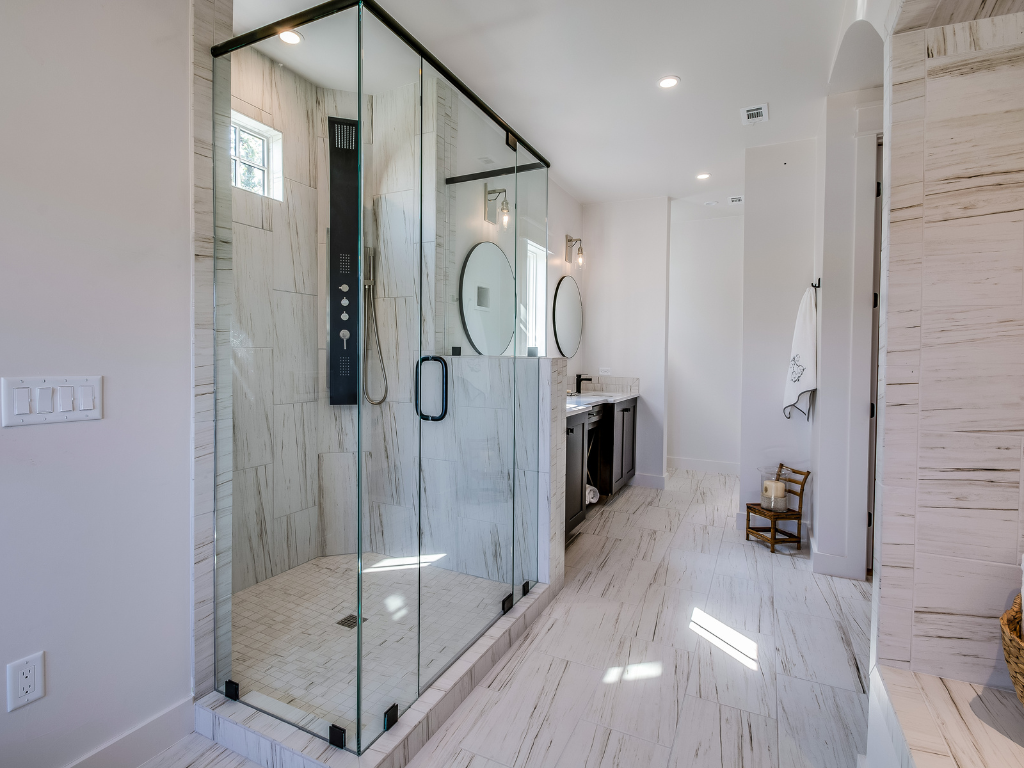
Barrier-Free Design
Walk-in showers make bathrooms safer by removing the need to step over a barrier. Countertops that adjust help everyone in the kitchen, no matter their height or mobility.
Ramps improve home access for people with mobility issues, including wheelchair users. These design ideas are crucial for inclusive spaces that change as needs do. They support aging in place, letting folks stay at home comfortably and safely.
Technology for Independence
Voice-activated systems make life easier, giving the power to control one’s home without touching anything. Lights and doors that work independently cut down on the hassle of manually switching them on or off—a big help for some folks.
Health gadgets built into homes keep an eye out, offering comfort and quick help when needed most. These tech tools are key in making sure people can live independently. They’re especially great for older adults and those with disabilities, ensuring safety and simplicity in use.
Safety Enhancements
Slip-proof floors are key to stopping falls, especially in slippery spots like bathrooms and kitchens. Having emergency call buttons within easy reach around the house means help is just a push away if ever needed.
Better lighting makes seeing and moving around safer, cutting down on accident chances. These elements are vital for creating safe living spaces. They put the health of residents first, focusing on older adults and anyone with mobility challenges.
Biophilic Design for Well-Being
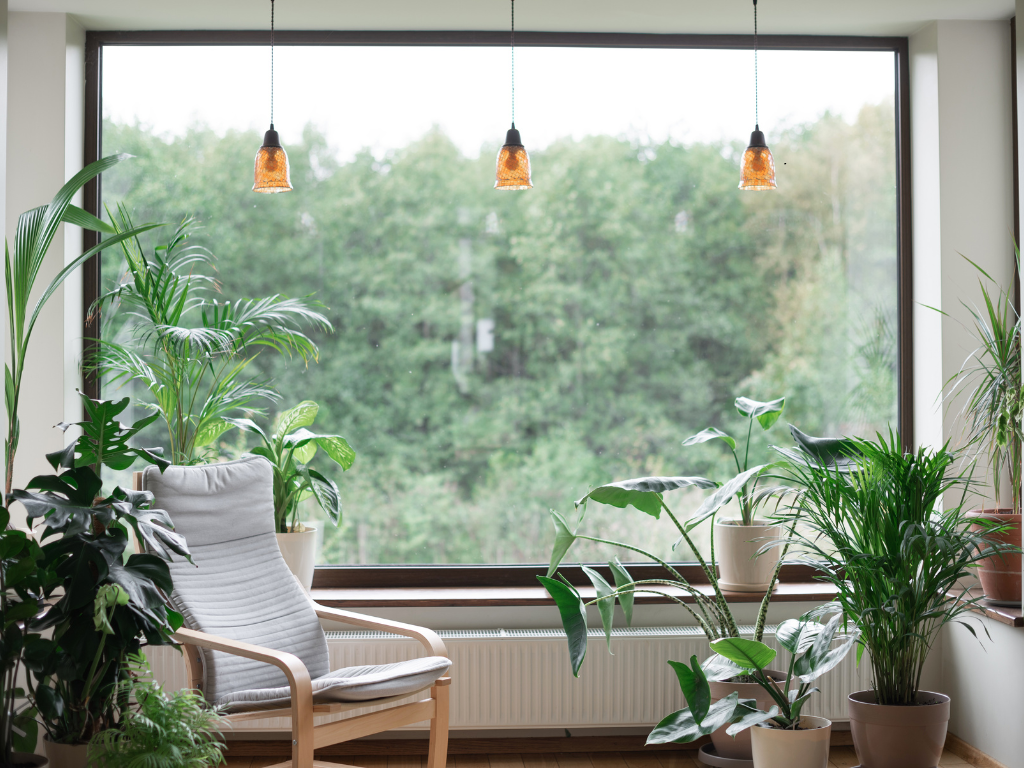
Biophilic design is all about bringing nature into our homes and workplaces. It’s based on the idea that people naturally crave a connection with nature. Adding natural elements to spaces can make us less stressed, think clearer, and feel happier.
This design style isn’t just for looks; it aims to make life better for everyone in these spaces. By mixing indoor environments with touches of the outdoors, biophilic design strengthens our bond with nature.
Here are some key parts of biophilic design and their benefits:
Natural Light
Skylights flood rooms with sunshine, making them feel brighter and cutting down on electric lights. Big windows do more than just let in light; they open up views to the outside world, linking indoor spaces with nature. Light tubes funnel daylight into parts of buildings that usually stay dark, lighting up central areas.
Adding these features means getting more natural sunlight. This is key for keeping our body clocks ticking right and boosting health overall. By placing these elements smartly, sunlight can reach far into buildings. This makes places come alive and fills people with energy.
Plant Integration
Indoor gardens turn any room into a green paradise. They clean the air and create calm spaces. Living walls, or green walls, do more than freshen the air. They’re eye-catching features that add life and color everywhere.
Adding potted plants is simple but powerful. It easily brings nature’s touch to both private and shared spots. Having plants around lowers stress, boosts creativity, and cleans up the air we breathe. Mixing different types of plant life in decor makes indoors feel like outdoors. This nurtures happiness and a deep bond with nature.
Natural Materials
Bringing wood into indoor spaces adds warmth and a touch of nature. It also boosts sound quality due to its natural traits. Stone, whether on floors, walls, or as decor pieces, brings texture and sturdiness. Its earthy colors help ground any room.
Natural fibers like wool, cotton, and bamboo bring sustainability right under our fingertips. They make things comfier while adding a bit of the great outdoors inside. These materials do more than just look good; they create healthier living areas by cutting down on synthetic stuff.
Opting for natural elements means embracing an all-around green design philosophy. This approach focuses on well-being and blending man-made with Mother Nature seamlessly.
Cost-Efficiency and Budgeting
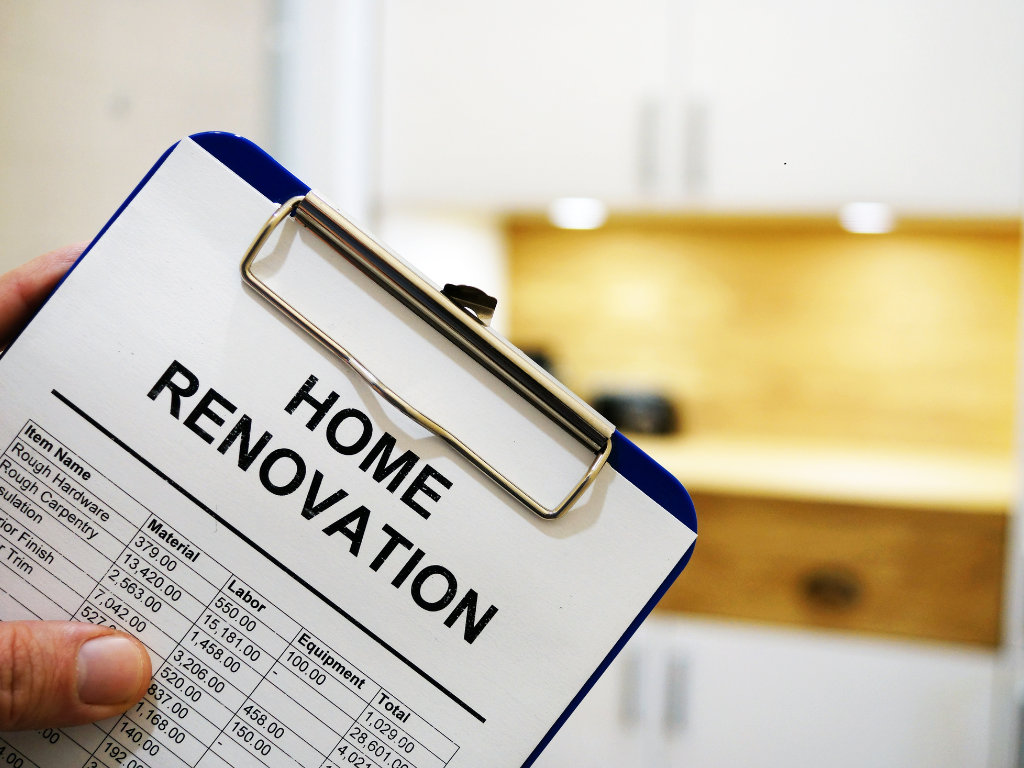
Budgeting Strategies
Figuring out which renovations give the most bang for the buck is key. It helps homeowners decide where to put their money. Breaking up big makeovers into phases can help spread costs, making it easier on the wallet over time.
Choosing materials wisely matters a lot, too, since prices swing wildly based on quality and where they come from. Smart planning cuts down costs but still gets those dream results. Putting all these tactics to work keeps renovation budgets in check and stress levels low.
Financing Options
Home equity loans tap into a home’s existing value to pay for upgrades. Personal loans, on the other hand, don’t need collateral but do require solid credit scores.
For certain updates, like those boosting energy efficiency, government grants, and rebates can help cover costs. Looking at these choices shows many paths to investing in renovations smartly. Each option has its benefits and drawbacks that deserve thoughtful review.
Energy Savings and Rebates
Switching to energy-saving appliances can really cut down on those utility bills as time goes by. Adding better insulation and new windows makes homes snugger, no matter the season.
Plus, there are perks like rebates and tax breaks for going solar that help with upfront costs. These changes don’t just save money in the long run; they also boost home values. Often, government and power companies give out rebates to push these eco-friendly upgrades.
DIY vs. Professional Services

DIY projects can be a way to cut costs, but they’re really for those who have the skills and time. There’s huge value in what professionals bring to the table, especially with tricky or specialized jobs. It’s all about finding that sweet spot between saving money and getting quality work done; pros make sure everything is safe and up to code.
Figuring out when it makes sense to tackle things solo versus calling in experts helps keep both expenses and results on point. Striking this balance is crucial for nailing a renovation without skimping on quality.
Long-Term Value
Thinking about how much a home could sell for later is key. Some updates can really boost its appeal to buyers. Choosing materials that last cuts down on upkeep and keeps the place sturdy. Going for designs that don’t go out of style means they stay looking good longer.
Putting money into high-quality stuff and smart design pays off, making the house more valuable and enjoyable over time. All these elements play a big part in whether fixing up a home turns out well now and down the road.
Conclusion
Today’s renovation trends are all about flexibility, tech-smart solutions, green thinking, and focusing on community. It’s key to create spaces that look good but also work well in sustainable and adaptable ways. Looking ahead, it’s vital to adopt these fresh ideas. This will help make places that meet the changing needs of people and communities alike. Ensuring comfort while being ready for change is what matters most.

